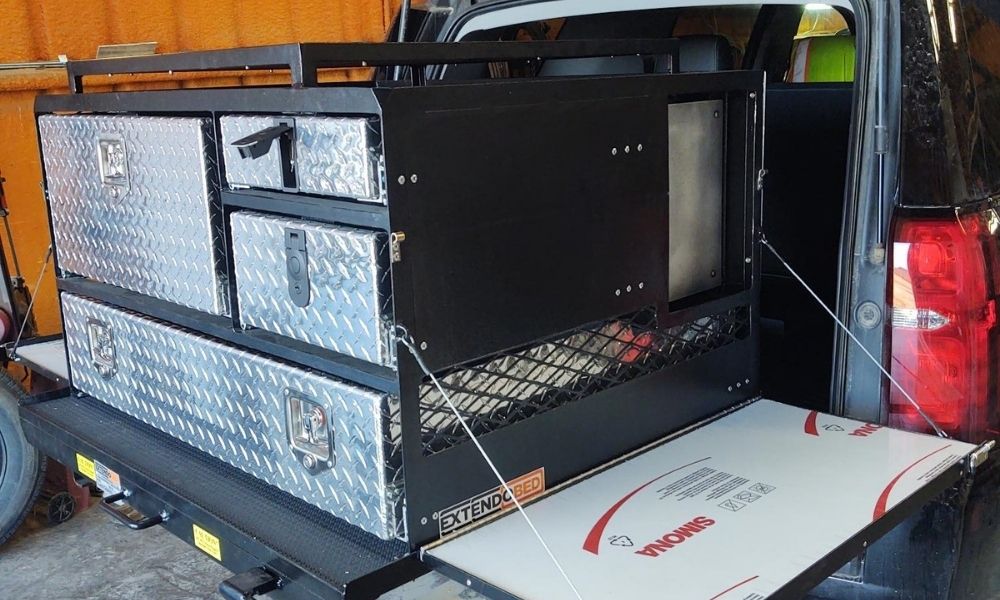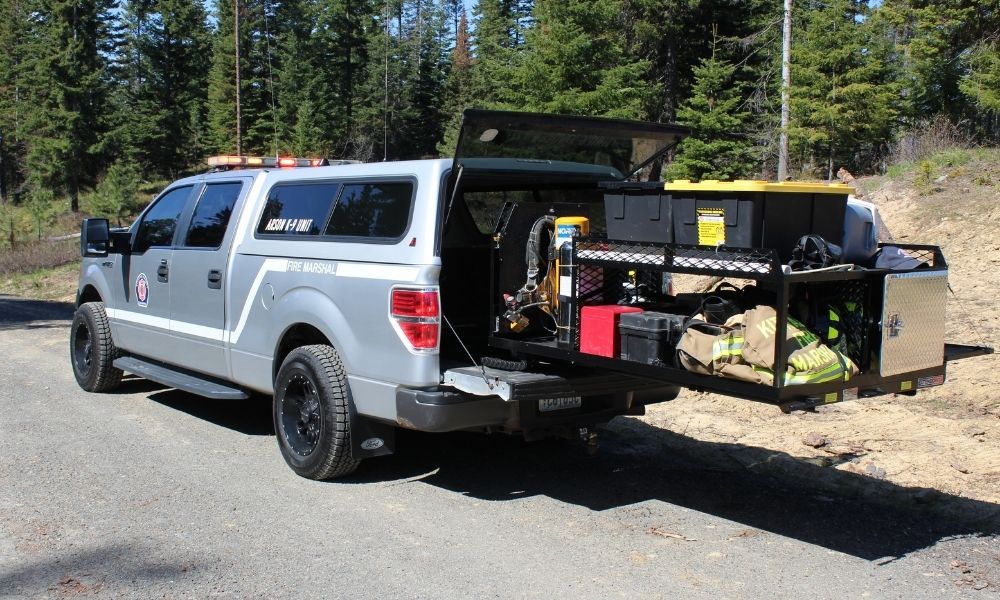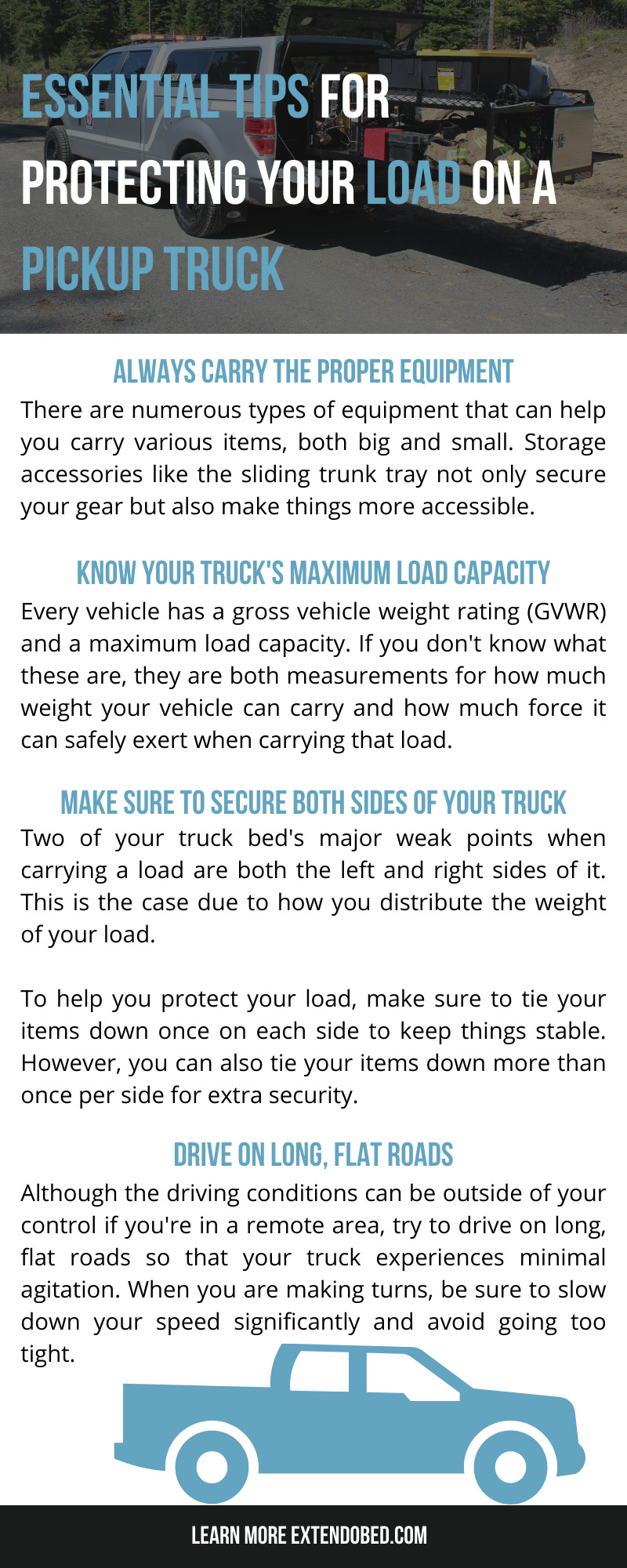Picture this: you’re driving your pickup truck on a long stretch of road for work when some items fall out of the back of your truck bed. How would you go about retrieving them? What are you going to tell your client, customer or supervisor when they find out an item is damaged or lost?
Whatever the case may be, this is a situation that you definitely want to avoid. If you ever worry about this type of scenario happening to your vehicle, then you need to learn the essential tips for protecting your load on a pickup truck.
Luckily, this guide will help you learn everything you need to know about this topic. So, without further ado, here are the steps for making sure that your load is always secure.
Always Carry the Proper Equipment
Although truck beds provide you with plenty of open space to carry a variety of loads, this can actually be detrimental to keeping your items secure because they will slide around in the back. For this reason, items like an industrial truck sliding trunk tray might be something that you want to put on your shopping list.
There are numerous types of equipment that can help you carry various items, both big and small. Storage accessories like the sliding trunk tray not only secure your gear but also make things more accessible. For example, instead of getting in and out of the truck bed whenever you need to grab a tool, sliding trunk trays allow you to pull out the tray and grab it without ever climbing into the back of your vehicle.
Furthermore, you can lock your things up when you aren’t using them, giving you extra security when you’re driving. Other items that you might want to consider for helping to secure your load include bungee cords, tarps, or ratchet straps if you are only transporting a few items at a time.
Know Your Truck’s Maximum Load Capacity
Additional accessories can help you carry and tow large objects, but you should still know your truck’s maximum load capacity regardless of which items you are working with. If you fail to stay under your truck’s max load, you could risk damaging your vehicle, your load, or both.
Every vehicle has a gross vehicle weight rating (GVWR) and a maximum load capacity. If you don’t know what these are, they are both measurements for how much weight your vehicle can carry and how much force it can safely exert when carrying that load.
The label on the inside of the door to your driver’s seat should give you this information, but if you can’t find it, you can look it up in the owner’s manual or online. Nevertheless, you never want to be unsure of your truck’s maximum load capacity because you don’t want to risk exceeding the limit.
Keep Your Heaviest Objects at the Front of Your Truck Bed
One of the most critical factors of protecting your load is to distribute the weight evenly. What this means is that you don’t want to have your smaller items crushed by larger items, and you also don’t want uneven weight distribution to affect how you handle your driving.
As you load items into your truck bed, start with the heaviest ones and push them towards the front of your vehicle. This will prevent your truck’s back end from weighing down the rest of your vehicle, which can affect your power steering ability on the front end. In addition, you will want to distribute the weight of your load so that it’s even on the left and right of your truck bed.
Make Sure To Secure Both Sides of Your Truck
Two of your truck bed’s major weak points when carrying a load are both the left and right sides of it. This is the case due to how you distribute the weight of your load.
To help you protect your load, make sure to tie your items down once on each side to keep things stable. However, you can also tie your items down more than once per side for extra security.
Tying things down will limit the motion of each item, which prevents everything from banging into each other. When objects move around too much in your truck bed, they could damage your truck or fall out of the vehicle entirely. This occurrence could lead to the vehicle behind you getting into a deadly accident, which is why it’s vital to secure your items properly.
Drive On Long, Flat Roads
Although the driving conditions can be outside of your control if you’re in a remote area, try to drive on long, flat roads so that your truck experiences minimal agitation. When you are making turns, be sure to slow down your speed significantly and avoid going too tight.
Also, never slam on the brakes when you’re carrying a large load because you could injury yourself when the objects come flying forwards. Any slight bump could lead to enormous consequences if your load falls out of your truck, so by maintaining a constant, steady speed on roads that are long and flat, you can reduce the chances of collateral damage.
Use a Flag When Your Load Extends Beyond Your Truck Bed
There are laws in place that require you to use a red flag to warn other drivers that you are carrying an oversized load. You can purchase this type of flag from virtually any hardware or auto goods store. If your load extends far beyond the edge of your truck bed, then you must use a flag or a similar piece of cloth to make other drivers aware of their surroundings.
Although drivers should be able to see you, sometimes they can’t tell how much room they have between your vehicle and theirs. The worst-case scenario would be for someone to crash into your load because there wasn’t enough space. But if they see the red flag, it will let them know they need to back up.
Overall, protecting your load is about more than just keeping things in the right place. It also means that you are protecting yourself and the drivers around you. Now that you know the essential tips for protecting your load on a pickup truck, you can drive more safely and effectively to your next job.



